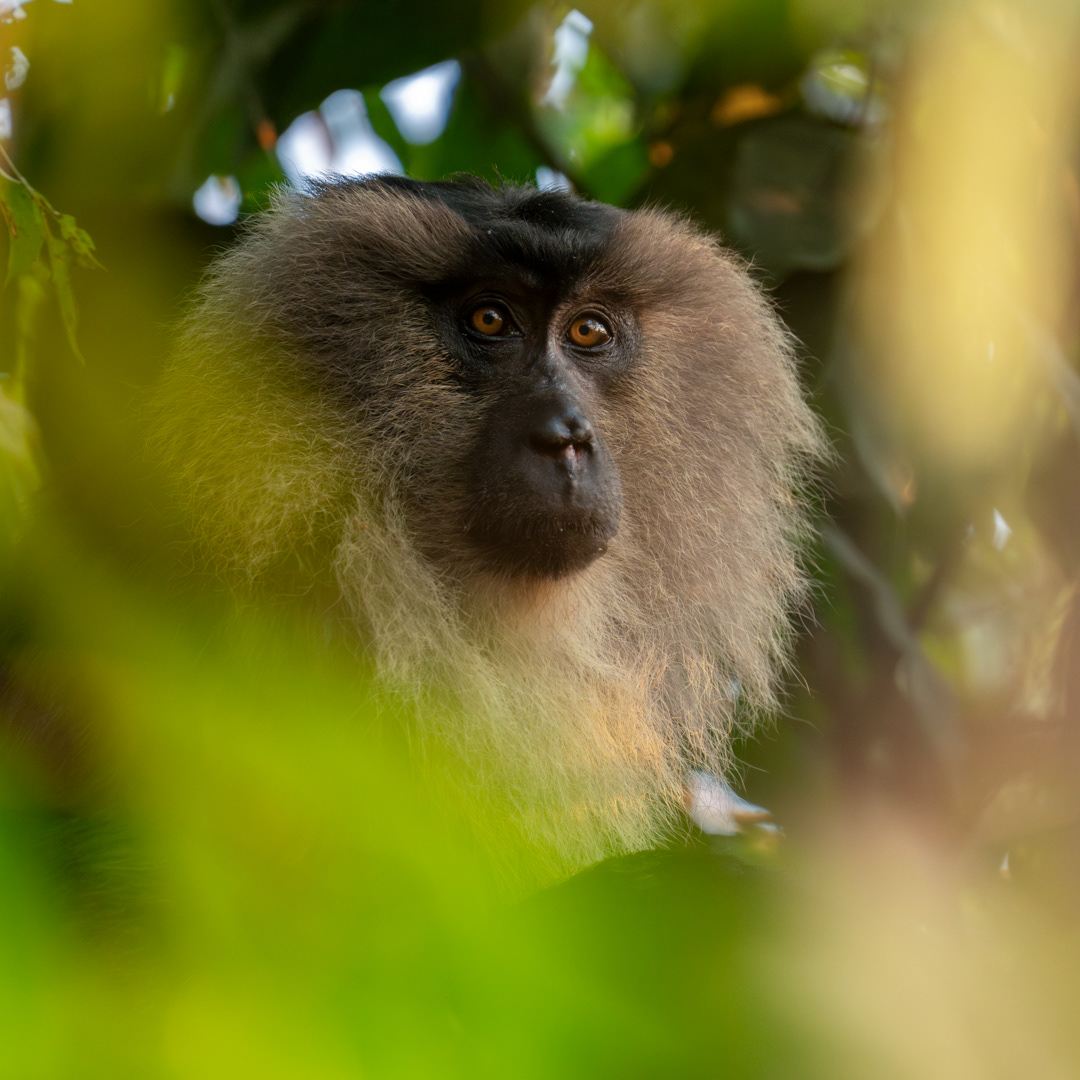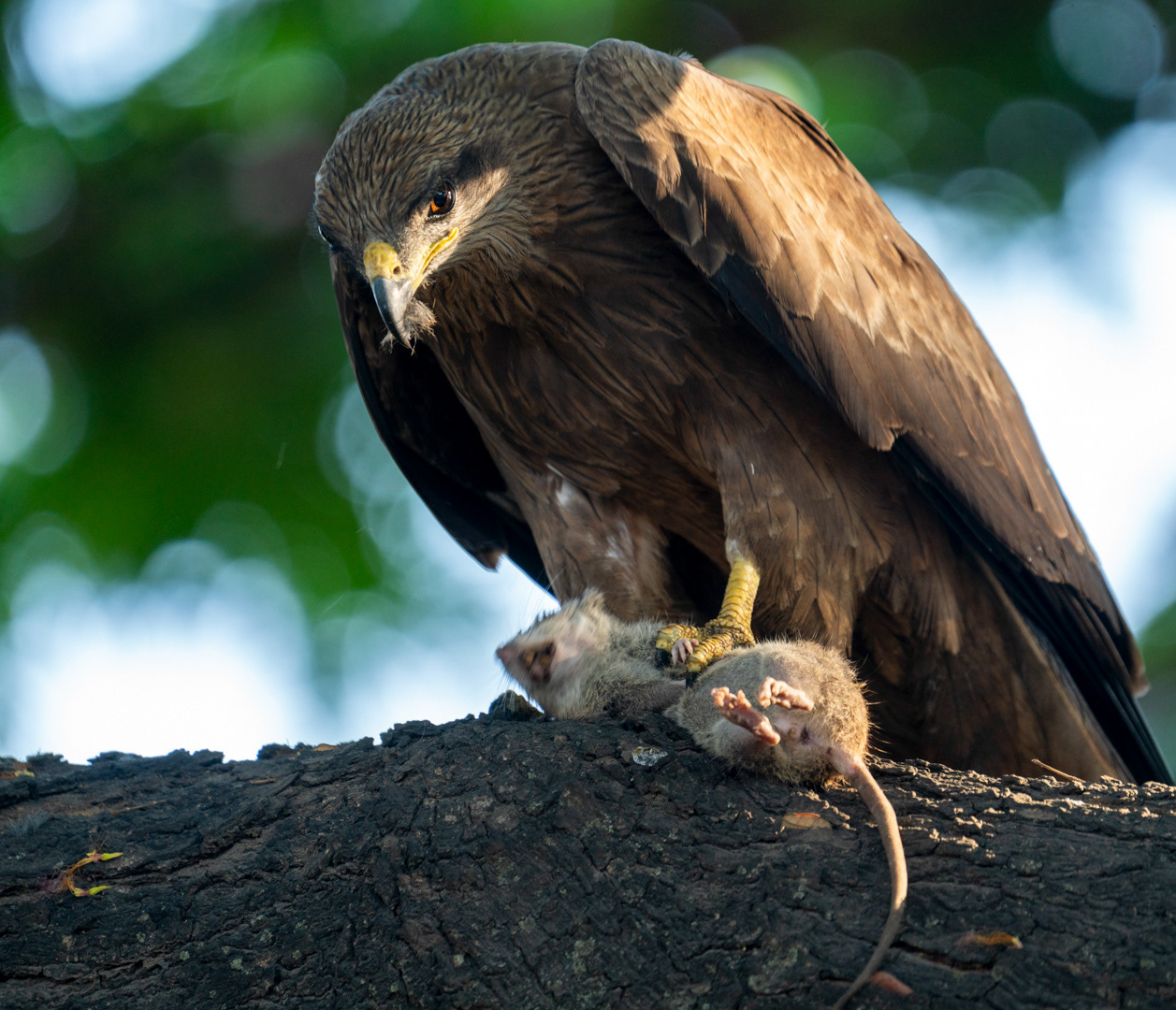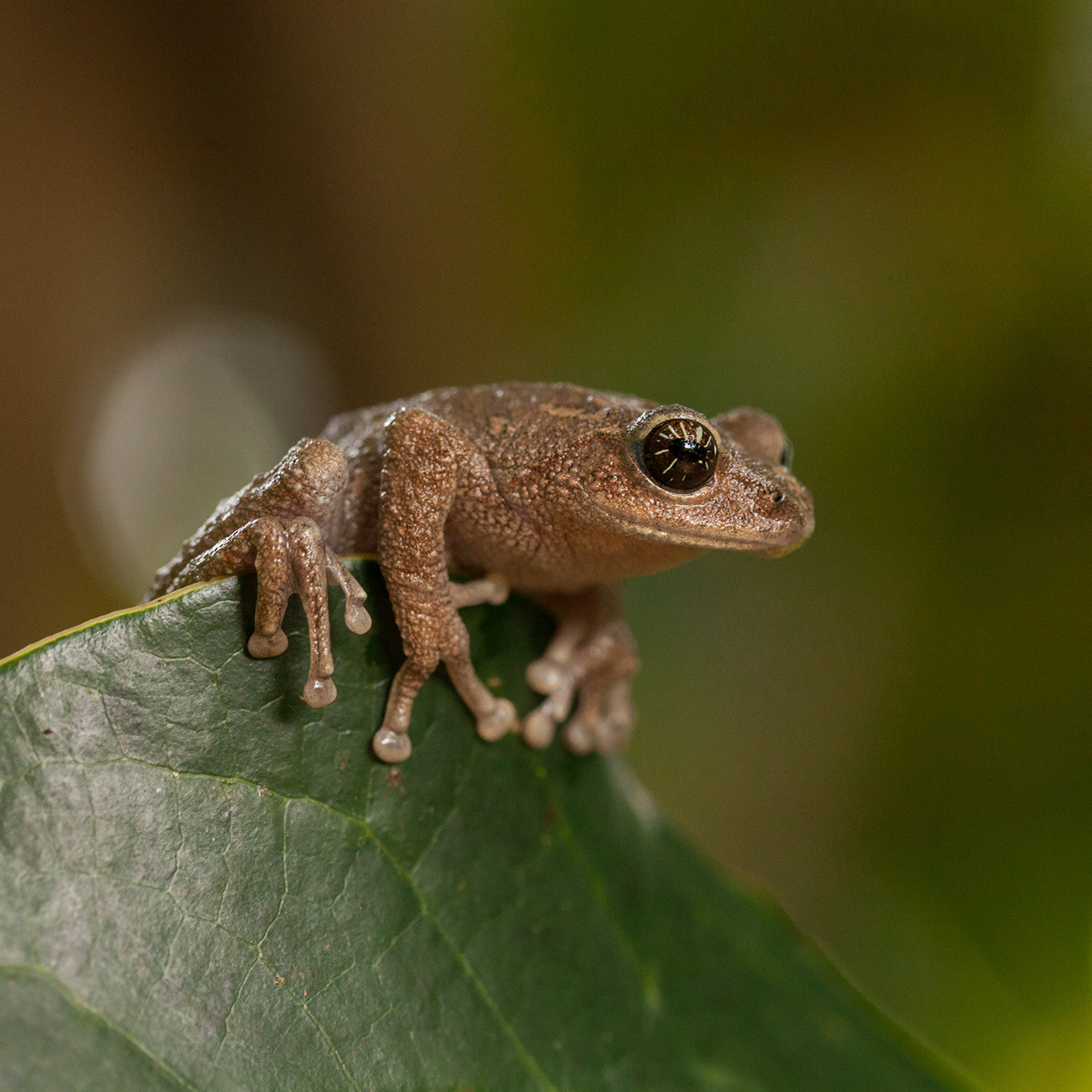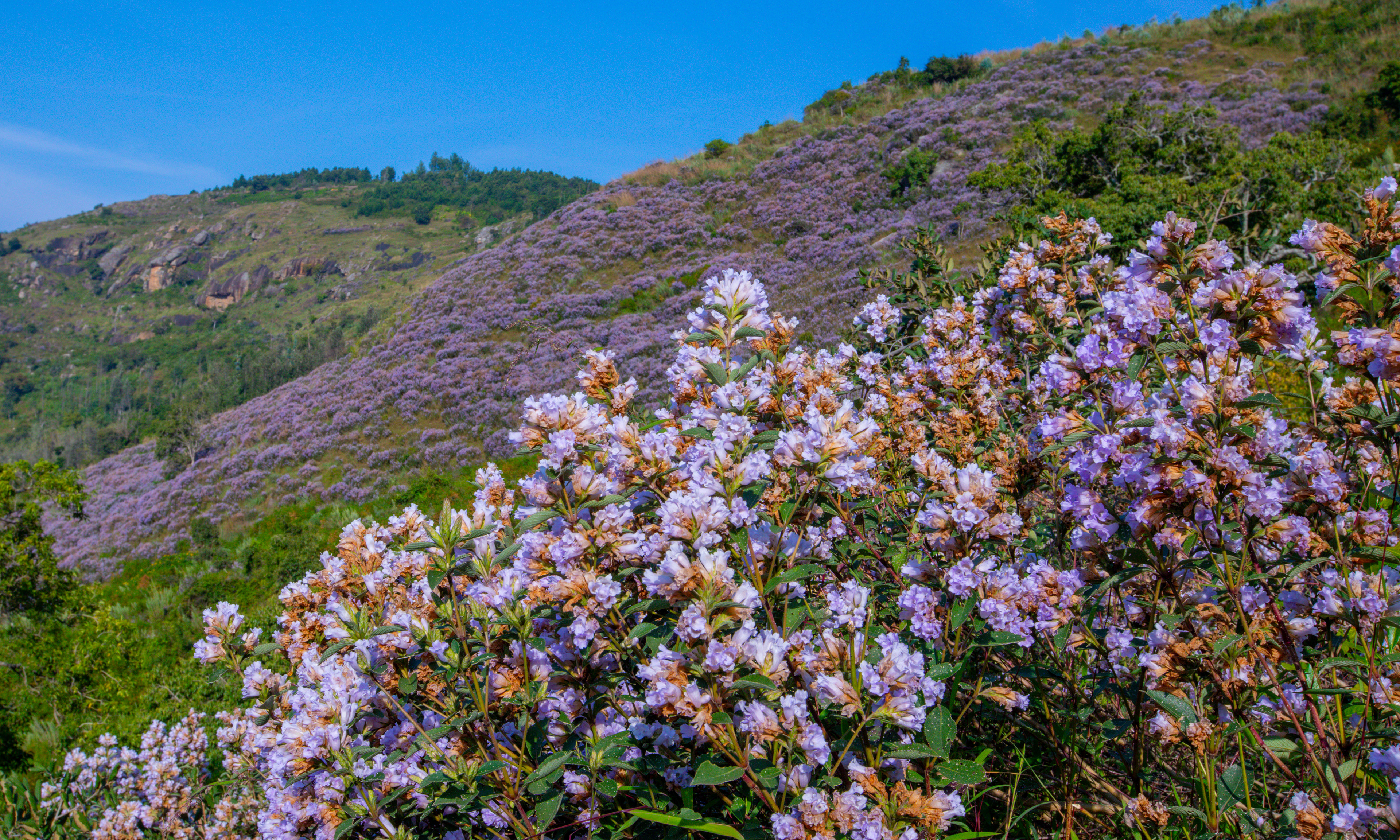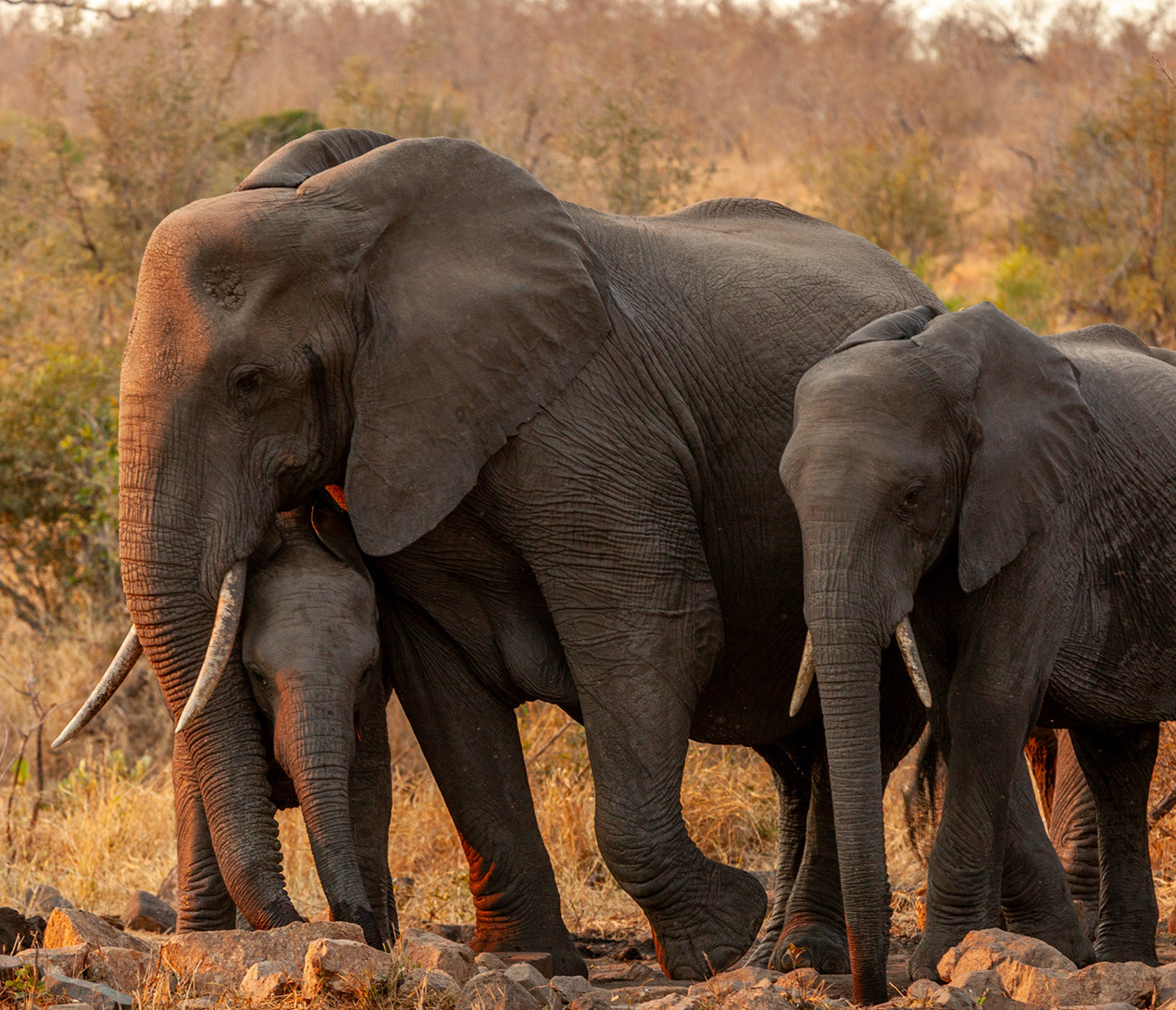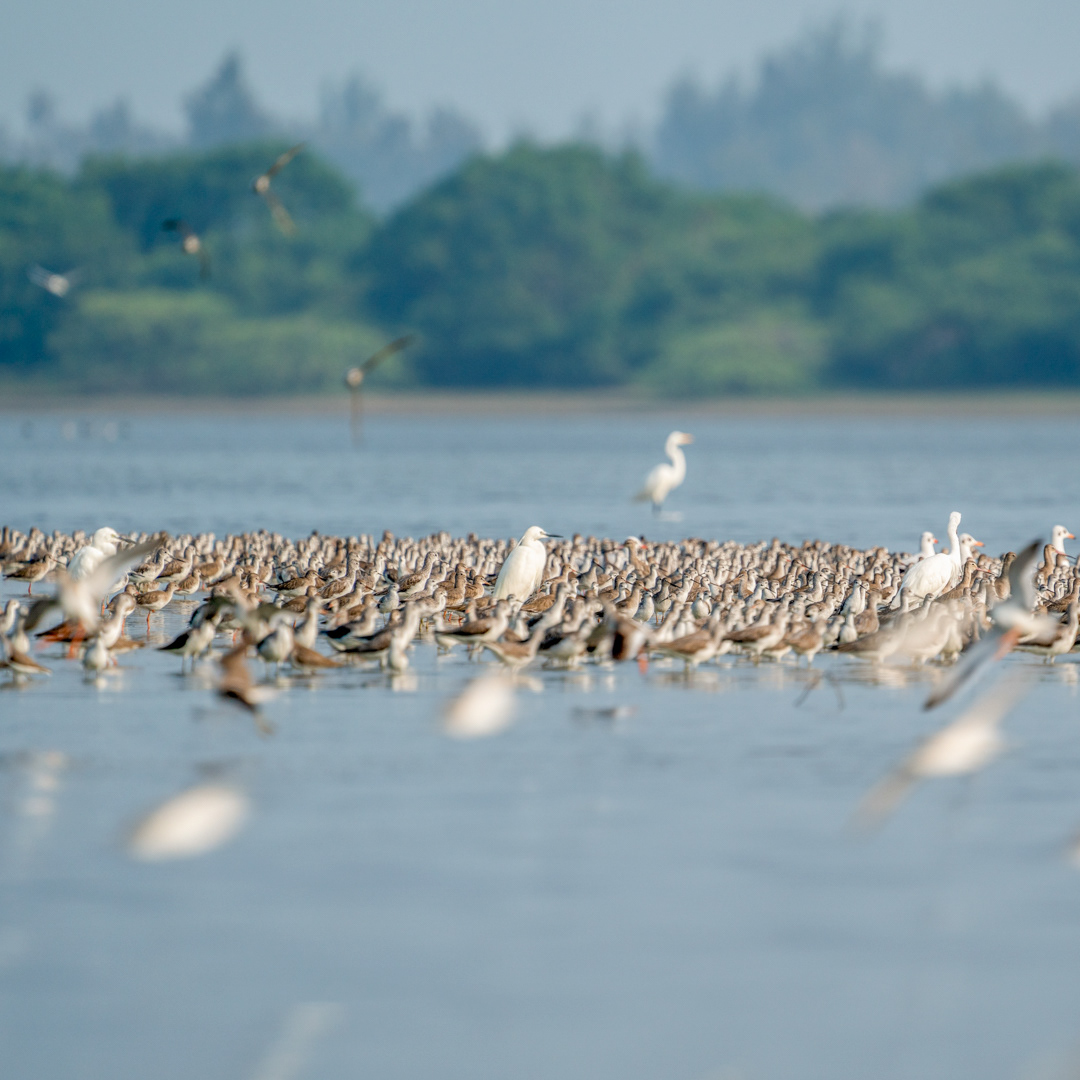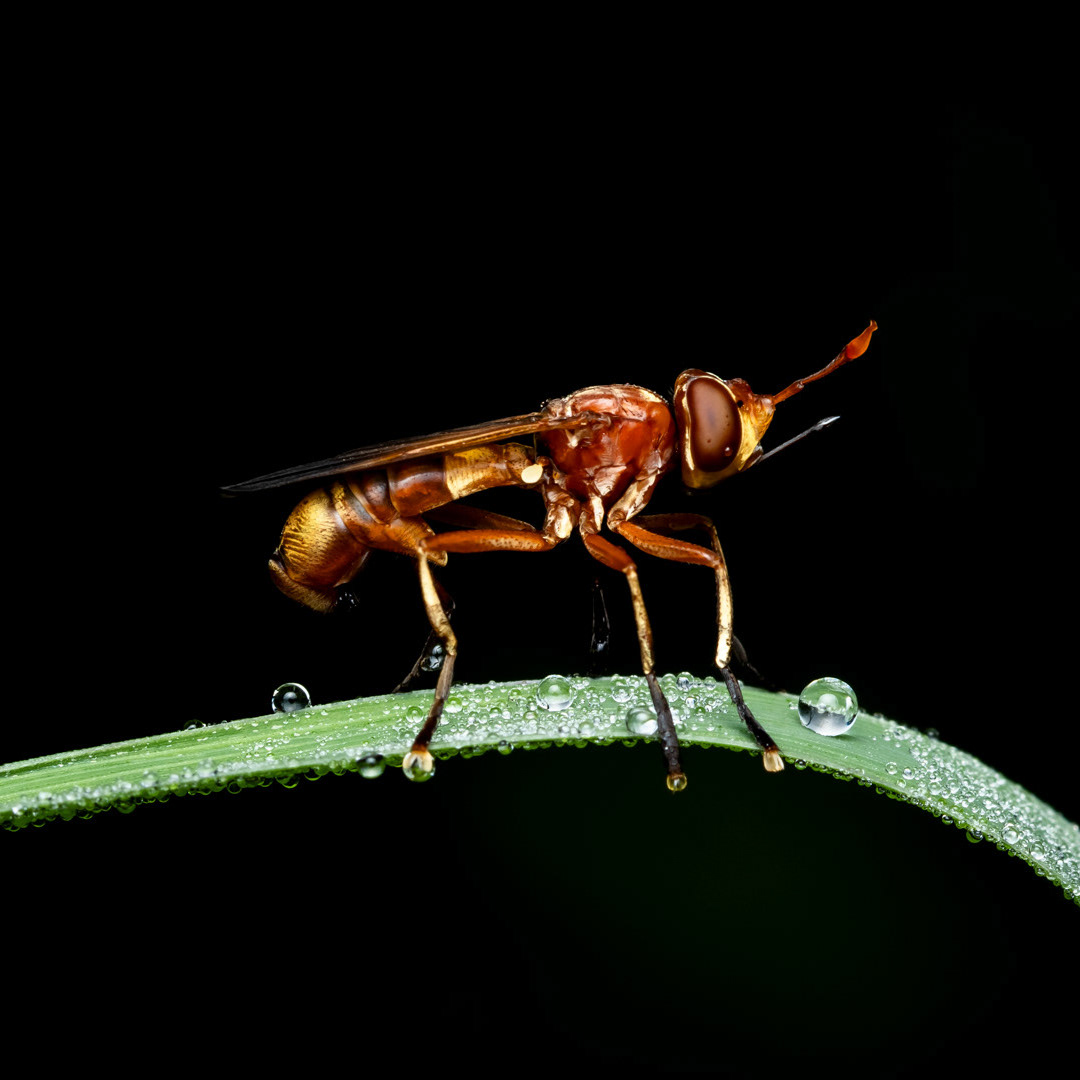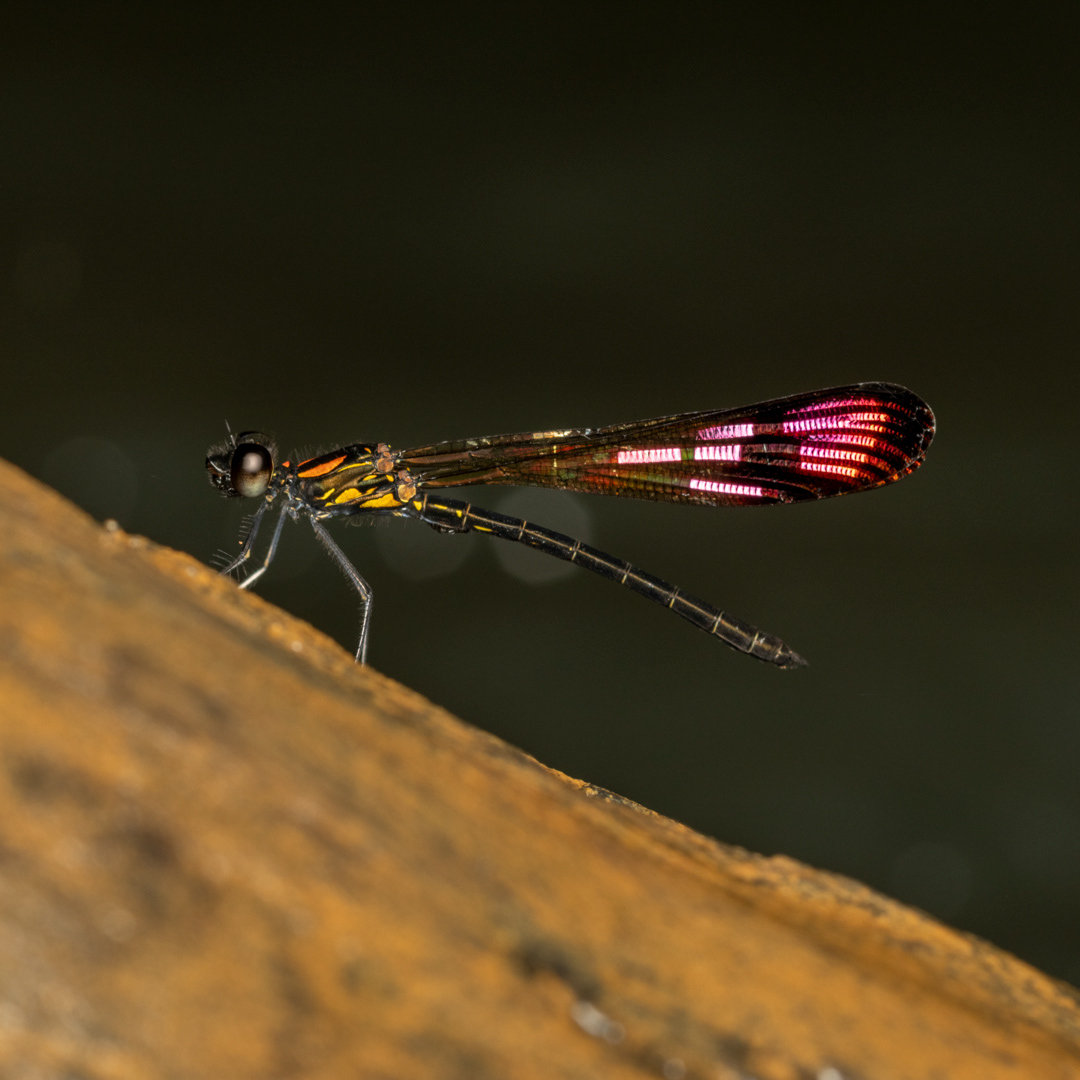a stunning peafowl performs its courtship ritual atop an abandoned building, its vibrant plumage and graceful dance adding a touch of natural beauty to the urban landscape.These majestic birds help control insect populations, including mosquitoes and flies, contributing to a more pleasant environment for human settlements nearby.
A Geometridae moth adeptly camouflages itself against a bamboo curtain, blending seamlessly into its surroundings. This natural adaptation allows the moth to evade predators while demonstrating the intricate ways in which wildlife utilises human-made structures for survival.Additionally, moths provide several benefits to humans, including pollination of plants, natural pest control by consuming insect pests, and serving as indicators of environmental health.
Barely discernible, these spotted owlets, are nesting in a crevice of a temple ruin in Hampi. This nocturnal species is well camouflaged in urban environments thanks to its grey and white feathers. Their voracious insect and small rodent diet indirectly helps check the spread of diseases.
An Indian nightjar perches on a tar road, gently shaking its feathers as it rests amidst the urban landscape. Despite the unusual setting, the nightjar demonstrates its resilience and adaptability to city life. Moreover, by consuming insects attracted to artificial lighting, nightjars play a role in controlling insect populations in urban environments, which indirectly benefits nearby human communities.
These ashy woodswallows use dish antennae to perch in the early hours of the day to sunbathe and warm up. These insectivores glide and circle in air in search of food and also sallies from treetops or other perches, pursuing insects in flight. This species is beneficial to organic agricultural practices.
Two Rock agamas bask in the sun atop stones destined for construction, their vibrant colors adding a touch of life to the urban scene.Rock agamas primarily feed on insects, including ants, beetles, and grasshoppers. By consuming these insects, they help control their populations, thus serving as natural pest controllers. In urban areas, where insects like ants and beetles can become nuisances, the presence of agamas can help control insect numbers and minimize the need for chemical pest control methods.
The female of the purple sunbird incubates eggs in a nest built on a communications cable and pole that provide structural support to the nest. Common in the Indian subcontinent and Middle East, they consume small insects, spiders, nectar, and also berries, thereby helping agriculture with pollination and pest control.
A pipistrelle bat, finds daytime refuge within a building. Thriving in our concrete jungles, these nocturnal insect-eaters provide a hidden benefit – natural insect control – for nearby communities.
A greater short-nosed fruit bat perches from a cable tray inside a building during daytime. These bats are frugivorous and locate their preferred fruits by scent. They are important seed dispersers and pollinate trees of many night-blooming flowers that share a symbiotic relationship with these bats.
A newly emerged mantis nymph delicately perches on a metal fence.By inhabiting human-made structures, these remarkable insects provide natural insect control, contributing to the balance of ecosystems and benefiting nearby human communities.
A pair of hill swallows perch on the side of a building in the Nilgiris. Populations of this species are located in southern hills of the Western Ghats and Sri Lanka and they reside between the altitude of 700–2400 m. Their main prey are flies, helping keep their numbers under control.
A large flock of birds, with black-tailed godwits and black-winged stilts making up the majority, carpets the water's surface. These long-legged shorebirds gracefully wade and feed, surprisingly at home in this urban environment. Their presence isn't just a beautiful sight - by feasting on insects in the water, they contribute to a healthy ecosystem, even in the heart of the city.
Indian stingless bee nest in a PVC pipe in the foundation of a wall. They are active pollinators for many cultivated and native plants and their honey is rich in antioxidants. Their role in ecological systems is invaluable.
An Eurasian hoopoe delicately extracts a moth caterpillar from between terracotta roof tiles, showcasing its remarkable foraging skills in urban environments.By preying on caterpillars and other insects, hoopoes help control insect populations, contributing to the ecological balance
A house sparrow meticulously constructs its nest in a crevice between terracotta roof tiles and a wooden log, ingeniously utilising human-made structures for shelter. By nesting in urban environments, house sparrows provide natural pest control by consuming insects, help maintain biodiversity
An Indian silverbill nests under a tent-like terracotta ridge tile such sties offer suitable temperature and humidity for these birds to raise their chicks. Silverbill are vital to farmers, as they feed on insects in agricultural fields.
Alongside a fisherman cleaning his net, a scene of opportunistic partnership unfolds. Egrets, elegant white birds with long legs, perch patiently on his boat. Their keen eyes track his movements, hoping for a discarded fish to snatch up for a quick meal. This interaction highlights the adaptability of both creatures – the fisherman working the waters, and the egrets capitalising on his catch for an easy meal.
A larva of a tailed jay butterfly has attached itself to a wooden pillar using silk.It will soon pupate and become a chrysalis and over the next few days it will transform into a butterfly. Once it has emerged, it will move from flower to flower feeding on nectar thus helping in pollination.
An Eurasian kestrel gracefully perches atop a light pole, surveying its surroundings with keen eyes. This exemplifies the adaptability of wildlife to urban landscapes, as the kestrel utilizes man-made structures for hunting and observation. By preying on rodents and small birds, kestrels indirectly benefit humans by helping maintain the balance of urban ecosystems and preserving the health of local wildlife populations, thereby enriching the natural environment for nearby residents
A spotted owlet, perched alertly on an electric pole near a community, surveys its territory. These fluffy predators, perfectly adapted to urban environments, help keep rodent populations in check, offering a natural insect population control benefit to nearby residents.
Three Asian green bee-eaters huddle on a wire, their emerald feathers catching the eye. Adapted to city life, these social birds help control insect populations, offering a natural benefit amidst the urban buzz.
This striped tiger butterfly is seen puddling in the gaps between concrete blocks. It is usually the males that congregate and consume fluids from mud dung, urine of mammals or decaying flesh that provide them with sodium and amino acids.The males transfer these nutrients to females during mating. Through such behaviour, nutrients are channelled up in the food web to other species including humans.
A vibrant flock of Indian silverbills perch on a wired fence, meticulously cleaning their feathers. These social birds, thriving in urban environments, take a moment for self-care amidst the city bustle. Their presence isn't just a beautiful sight - by feeding on weed seeds, they contribute to a healthy urban ecosystem, even in the heart of the concrete jungle.
